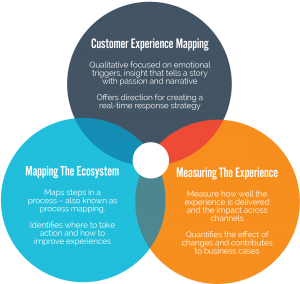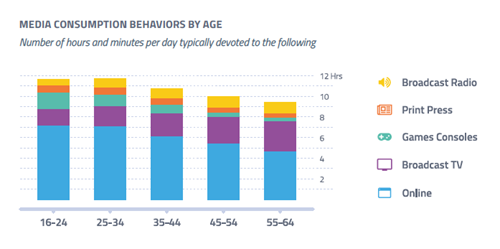Understanding Your Customer’s Path to Engagement
Posted on July 7, 2017
Consumers today expect every connection point along their journey with your brand—from discovery to selection to purchase to advocacy—to be seamless across all channels and devices. Each point of interaction forms a unique occasion and opportunity to cultivate a trusted connection. This can be a challenge for organizations looking to align messages with platforms while needing to allocate marketing budgets across multiple channels. And, it can be even more of a challenge when considering the constant shift in consumer behavior and their consumption of media. This is where Customer Journey Mapping comes in.
At Communica, we approach Customer Journey Mapping as a holistic exercise requiring participation from every discipline within the organization. Through a combination of consultation, research and the use of sophisticated customer experience mapping technology, we explore how consumers are engaging with the brand. This exploration includes aligning a true path-to-purchase, including barriers, and an ROI from every moment of engagement.
To put it simply, here are the key Journey Mapping objectives:
- Improve cross-channel customer experience
- Build audiences and competitive insight
- Expand transparency; support trust, advocacy and loyalty

When working on Customer Journey Mapping, it’s important to keep in mind that different buyer personas are likely to take completely different paths to purchase. This means that the more channels organizations integrate, the greater the ability to further the needs of a diverse customer base. It also emphasizes the importance of getting the channels, the audience segments and the marketing investment aligned.
Understanding the differences and similarities within unique audience segments will not only support a more disciplined approach to marketing, but also connectedness within every touch-point across the organization. It will also allow you to create relevant experiences for each segment and more importantly, will offer entry points for influence and loyalty.
It is important to remember that customers consume media differently. For example, age plays a part in behavior as evidenced in the chart below.

Successful Customer Journey Mapping yields these tangible results:
- Documentation of each interaction point
- Ethnographic view of customers
- Wide variety of emotional / rational data points
- Holistic view of your organization; the employee and customer experience
- Flow across the path to purchase
- Clear presentation of what’s working—what’s not—and why
- ROI and data driven specifics
- Gaps and opportunities between each
- Barriers to conversion
- Revenue acceleration
- Strategic insights
- Actionable tasks
- Collaborative planning
Successful Customer Journey Mapping yields these intangible results:
- Engagement of key stakeholders across divisions and business units
- Improved absorption of information
- Rationalization of company, employee and customer needs
- Emotional buy-in through visual storytelling
- A forum for breaking down silos
- Realization—customers view and experience the whole brand and not divisions or business units
- Need for greater collaboration and coordination where customers are cutting across different channels and parts of the organization
Understanding a customer’s journey with your brand is key to optimizing sales and customer loyalty. Journey Mapping can provide the insight needed to drive this engagement.
Partner: SuiteCX
